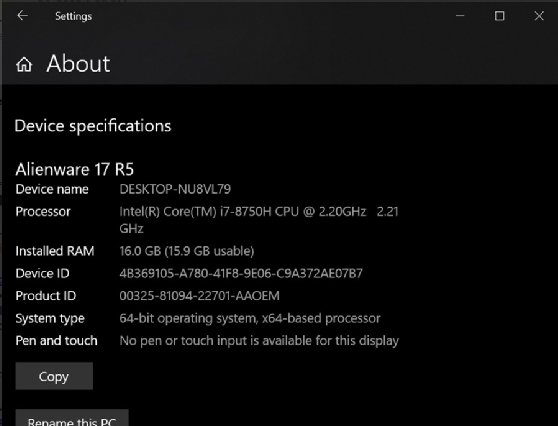64-bit processor (64-bit computing)
What is a 64-bit processor (64-bit computing)?
A 64-bit processor refers to a microprocessor that can process data and instructions in chunks of 64 bits. Microprocessors that can handle 64 bits perform a larger number of calculations per second compared to 32-bit processors. Typical variations of the term include 64-bit CPU, 64-bit computing and 64-bit microprocessor.
Every microprocessor handles two key criteria: memory addresses and the corresponding data or instruction present at each memory address. Thus, microprocessors are tied to memory where applications and data are executed, and the number of bits available on a processor define the memory size and space, as well as the volume of data that a processor can handle per unit of time. This has become a de facto way of classifying or categorizing modern processors.
A 64-bit processor uses internal registers -- temporary storage locations within the processor -- that are 64 bits wide. This typically corresponds to an address bus and data bus that are also 64 bits wide. The address bus is the pathway of electrical signals used to determine the device or memory address that the processor is attempting to access. The data bus is the pathway used to exchange data with the intended address. Processors also include signaling for a third control bus, but this bus is typically a unique collection of discrete, or individual, digital signals and does not operate like an address or data bus.
What's the difference between a 32-bit and 64-bit processor?
64-bit processors may include and support the following advanced technologies:
- faster system clock speeds and bus speeds;
- hyper-threading and fast data exchanges;
- larger internal cache; and
- advanced instruction sets.
However, these features are generally not a direct result of 64-bit registers or address or data bus design. For our purposes, the principle distinction between 32-bit and 64-bit processors is the increased bus width.
The simple notation of 64-bit may sound unimpressive by itself, but the use of 64 bits brings powerful implications for computers. In binary parlance, 264, or two raised to the 64th power, equates to 18,446,744,073,709,551,616 unique numbers. For an address bus, that is about 18 exabytes of potential addressable memory space. For a data bus, that is 18 quintillion different possible values. It is leaps and bounds more than the 4 gigabytes of addressable memory space possible with previous 32-bit processors (232 = 4,294,967,296).
64-bit computing compatibility explained
Considering the large investment involved in computer hardware and software, the idea of backward compatibility is critical -- will what I have now work on something different or new? Moving from a 32-bit to a 64-bit architecture could potentially be disruptive. Even though 64-bit computing has been the norm for well over a decade now, it is worth considering the implications of such a transition.
Hardware. 64-bit processors are not compatible with 32-bit processors. The sheer number of signal pins involved in the processor's packaging is enough to ensure that a 64-bit processor cannot simply drop into a 32-bit processor socket on the computer's motherboard. At a minimum, a 64-bit computer requires an entire motherboard replacement to support the 64-bit processor, differing clock and bus configurations, new chipsets to interface the processor to other input/output devices like disks and ports, and sockets for much larger memory devices.
Most system diagnostics reveal the current processor hardware configuration. For example, Microsoft Windows 10 shows basic system details by selecting Settings > About.

OSes. 64-bit processors have taken great pains to support compatibility between both 32-bit OSes and 64-bit OSes. A computer owner who licensed a 32-bit OS should be able to reinstall or use that OS on a 64-bit computer. However, the advanced features, functionality and performance of the 64-bit processor may not be available without a suitable 64-bit OS. Emerging OSes, such as Windows 11, dropped support for 32-bit architectures and no longer support 32-bit computing.
Software drivers. Drivers are small bits of software designed to extend the capabilities and compatibilities of an OS by enabling it to recognize, configure and use hardware devices. The drivers should match the OS. So, a 32-bit OS should run with 32-bit drivers, and a 64-bit OS should use corresponding 64-bit drivers. A 32-bit driver is not compatible with a 64-bit OS. Most hardware devices have both 32-bit and 64-bit driver versions available, so select the driver version that is appropriate for the OS.
If a 64-bit driver is not available for a hardware device, it may be possible to use a generic 64-bit driver, although some of the device's specialized or proprietary features may be unavailable. Otherwise, the device needs to be replaced with a new device that does include a suitable driver.
Applications. Most 32-bit applications function on a 64-bit processor and 64-bit OS. The only applications that do not operate properly on a 64-bit platform are those that rely specifically on 32-bit drivers -- which are not compatible with 64-bit OSes -- or those applications that incorporate 32-bit processor-specific instructions or code. Today, only the most unique or niche applications continue to use 32-bit environments, and almost all enterprise applications have updates and patches available to handle 64-bit software versions.
Advantages and limitations of 64-bit processors
64-bit processors offer numerous advantages, including the following:
- Vastly more memory space. Such a large amount of addressable memory space enables computers to load and run large, complex software programs that use enormous data sets -- all loaded and running in the computer's memory. These programs can include computer-aided design and other data visualization applications, database management systems, technical and scientific applications such as Hadoop and other big data tools, and high-performance servers. In addition, such a vast memory space can readily support logical virtualization and the deployment of many simultaneous virtual machines.
- Better performance when moving data. Moving and processing more data faster is the key to processor performance. Since processors use 64 bits for both addressing and data, the processor can carry twice the amount of data carried by 32-bit processors in every clock cycle. This enables the processor to handle far more data and instructions per unit of time than previous processors.
- More detail in 64-bit data. Not only can 64 data bits move more smaller pieces of data, a 64-bit data word can conveniently express orders of magnitude more data resolution -- 264 different states rather than 232, or even smaller 216 or 28, states. Such additional detail can have a dramatic effect on the complexity and expression of data sets, such as rendering topographical maps or visualizing other data.
Still, there are several drawbacks to today's 64-bit processors, including the following:
- Industry catch-up. In practical terms, today's 64-bit processors cannot access all of the potential memory space that 64 bits offer. When 64-bit processors were first released, the practical memory limit was about 8 terabytes (TB) because of early 64-bit OSes and other hardware limits. Today, OSes and supporting hardware have advanced, and 64-bit processors are typically limited to about 256 TB -- just 48 bits -- of memory space because of current OS and remaining limitations of memory design. The problem is not that the 64-bit processor cannot use all 64 bits, but rather the rest of the computer industry is still catching up and evolving to grow into that enormous capacity. So, this issue should disappear in the coming years.
- Memory waste. 64-bit computing offers backward compatibility with 32-bit computing. However, the translation from 32-bit to 64-bit computing environments can lead to wasted memory capacity, depending on the ways that data is formatted and stored. For example, some 32-bit applications and data sets may need to add padding -- basically null data -- to occupy the additional 32 bits at every address. It works, but it is not an effective use of the additional capacity when using older 32-bit software or data. This issue should also disappear over time as older 32-bit legacy software is updated and replaced by equivalent 64-bit programs.
The terms CPU and microprocessor are used interchangeably, and while they both execute some of the same computer tasks, their functions differ slightly. Learn how CPUs and microprocessors differ.







